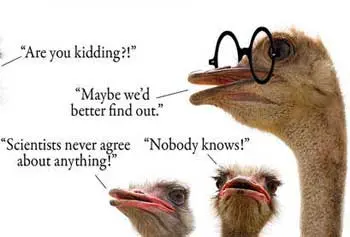
10/07/2013
Nashua Telegraph
By David Brooks
Willie Sutton famously said he robbed banks because that’s where the money is. David Lustick, of Nashua, has adopted a similar philosophy for getting the public to think about science, and particularly about climate change.
“Instead of expecting people to go to the museum, why not bring the learning opportunity to where the people are,” said Lustick, a professor of mathematics and science education in the graduate school of education at UMass-Lowell.
In this case, the people are riding the red and orange lines of the MBTA – roughly half a million people each weekday. They are the initial focus of ScienceToGo.org, a collaboration led by UMass Lowell and Lustick.
“We’re looking at it as an extension of the Boston Museum of Science, as a science exhibit that’s outside the walls of the museum,” said Lustick.
Last week, ScienceToGo launched its first campaign, which will run 14 months. It features Ozzie the Ostrich, a character developed by advertising and communication consultants, to discuss what scientists know, and don’t know, about global warming and climate change.
The initial poster shows goofy-looking ostriches (can ostriches be anything but goofy-looking?) wondering “do climate scientists agree that people are causing climate change?” Among the responses: “Are you kidding?! Scientists never agree about anything!”
This week’s launch also included ostrich-outline statues on Boston Common and in Chinatown, asking people to guess what percentage of climate scientists agree that humans are causing current weather changes. About three-quarters of the passersby who responded knew the correct answer: 97 percent.
Choosing climate change as the initial focus instead of something less politicized was deliberate, since it’s a textbook example of a scientific topic overwhelmed by non-scientific discourse – just the sort of thing where laymen can benefit from a little informed background.
I am reminded of Science Cafe New Hampshire, which will return to Killarney’s Irish Pub on Wednesday, Oct. 16, to discuss the science (not the public policy) of genetically modified organisms, another topic where the fog of debate makes it hard to find scientific bedrock. I’ll write more about the cafe in next week’s column.
Lustick says he has been studying and working on the question of helping the public understand scientific knowledge and the scientific process, for years.
“How can we help scientists communicate their work? They’re notoriously bad at it,” he said. “We’re bringing in people who know about communication ... to help us with this.”
ScienceToGo was put together with $2.2 million in National Science Foundation funding. Other participants include UMass Boston, Hofstra University and the Boston Museum of Science.
Aside from the posters on the T there will be various “above-ground stunts” like the ostrich statues, and efforts to evaluate how well it’s working.
“We need to evaluate how it’s effective, if it’s effective – how it could be improved,” said Lustick. “We want to create a model that could be used to learn about any relevant science that’s important to people.”
That sounds good to me. I’ve spent my whole career by trying to understand what certain scientists are doing and earn my vast paycheck by passing on bits of knowledge – or at least the fact that it’s fun to find out (this column was originally called “Science from the Sidelines”).
If people can get the same idea while riding the T, more power to them.
